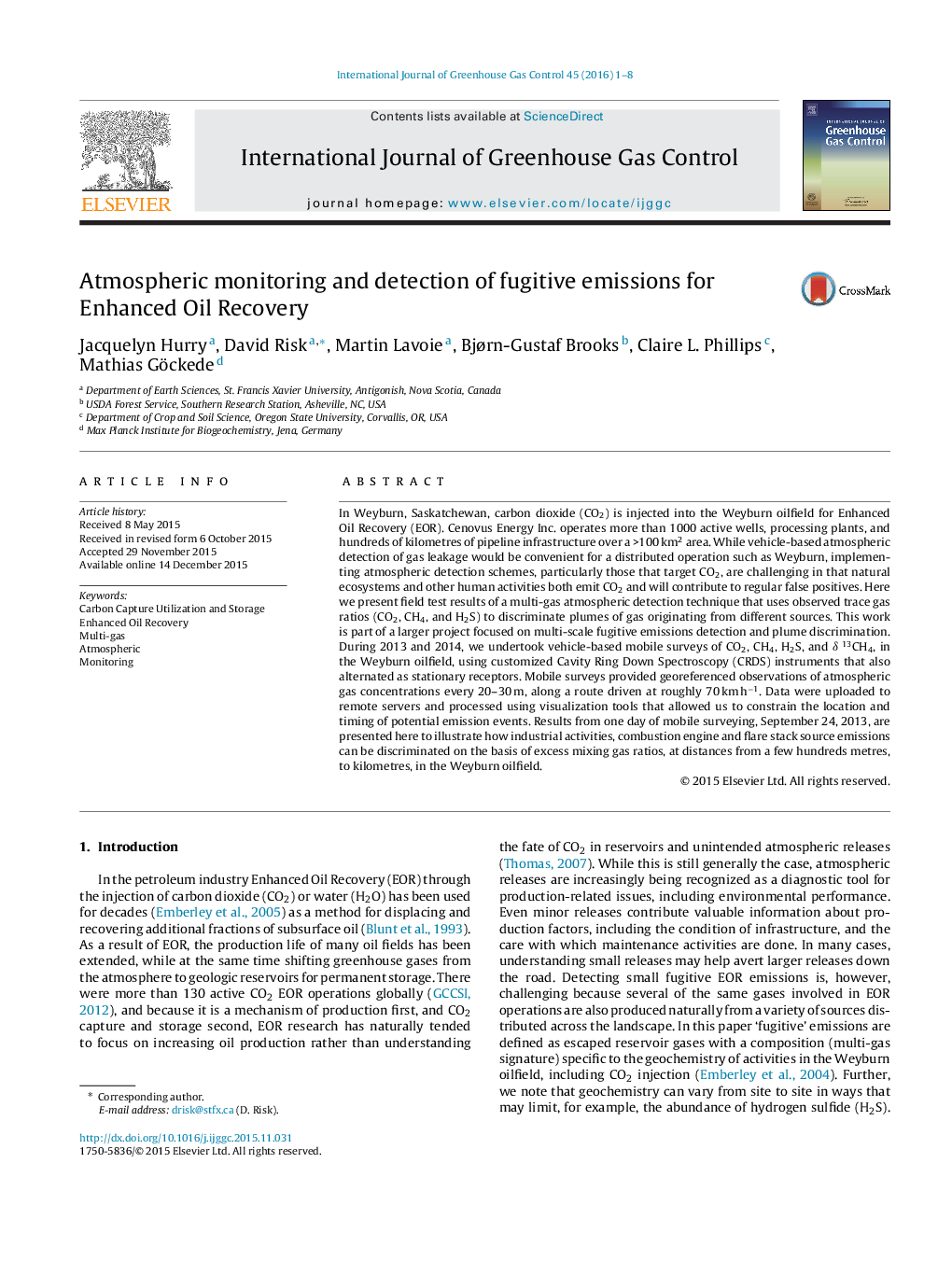| کد مقاله | کد نشریه | سال انتشار | مقاله انگلیسی | نسخه تمام متن |
|---|---|---|---|---|
| 1742917 | 1521976 | 2016 | 8 صفحه PDF | دانلود رایگان |
• Proof of concept for a multi-gas, ratio-based, mobile fugitive gas detection technique.
• We explain why excess ratios are preferred over raw ratios for atmospheric detection.
• Excess ratios of CH4:H2S are most sensitive, but excess ratios of CO2:CH4 were also useful.
• Signals from multiple sources were detected and differentiated at kilometer-scales.
• Our results can be applied across spatial scales, and in complex environments.
In Weyburn, Saskatchewan, carbon dioxide (CO2) is injected into the Weyburn oilfield for Enhanced Oil Recovery (EOR). Cenovus Energy Inc. operates more than 1000 active wells, processing plants, and hundreds of kilometres of pipeline infrastructure over a >100 km2 area. While vehicle-based atmospheric detection of gas leakage would be convenient for a distributed operation such as Weyburn, implementing atmospheric detection schemes, particularly those that target CO2, are challenging in that natural ecosystems and other human activities both emit CO2 and will contribute to regular false positives. Here we present field test results of a multi-gas atmospheric detection technique that uses observed trace gas ratios (CO2, CH4, and H2S) to discriminate plumes of gas originating from different sources. This work is part of a larger project focused on multi-scale fugitive emissions detection and plume discrimination. During 2013 and 2014, we undertook vehicle-based mobile surveys of CO2, CH4, H2S, and δ13CH4, in the Weyburn oilfield, using customized Cavity Ring Down Spectroscopy (CRDS) instruments that also alternated as stationary receptors. Mobile surveys provided georeferenced observations of atmospheric gas concentrations every 20–30 m, along a route driven at roughly 70 km h−1. Data were uploaded to remote servers and processed using visualization tools that allowed us to constrain the location and timing of potential emission events. Results from one day of mobile surveying, September 24, 2013, are presented here to illustrate how industrial activities, combustion engine and flare stack source emissions can be discriminated on the basis of excess mixing gas ratios, at distances from a few hundreds metres, to kilometres, in the Weyburn oilfield.
Journal: International Journal of Greenhouse Gas Control - Volume 45, February 2016, Pages 1–8
